
With Kinesis Pro, you can create personalized alerts to monitor and notify you about specific events.
Table of content
1. Overview
Watch the video below or scroll down for step-by-step instructions.
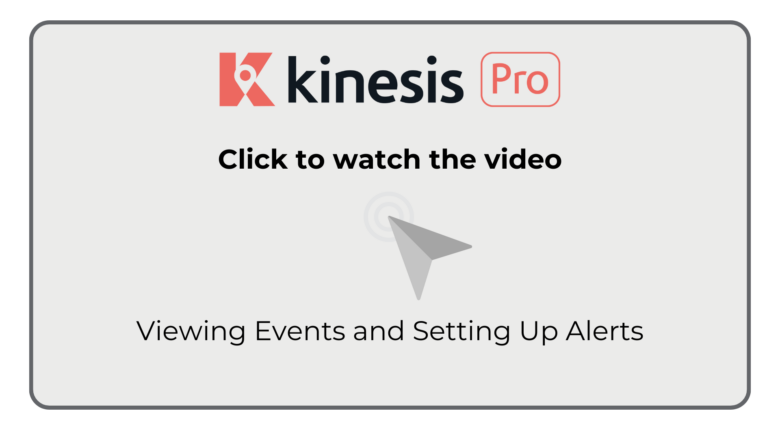
1. Overview
The platform allows users to receive alerts in real-time by email.
Alerts are triggered by events which come from:
- . The Device directly – e.g. impact, harsh braking,
- . The software set-up, in combination with the Device’s data – e.g. over speeding, fuel fill-ups, temperature violations.
2. Creating an alert
Alerts can be created in Administration or on the Alerts page under the Status section. This section covers the creation and editing of Alerts on the Alerts page.
2.1 Create an alert
1. Go to Administration,
2. Choose the Alerts section under the Client,
3. Click the Plus button,
4. Enter the relevant information in the Wizard (explained below).
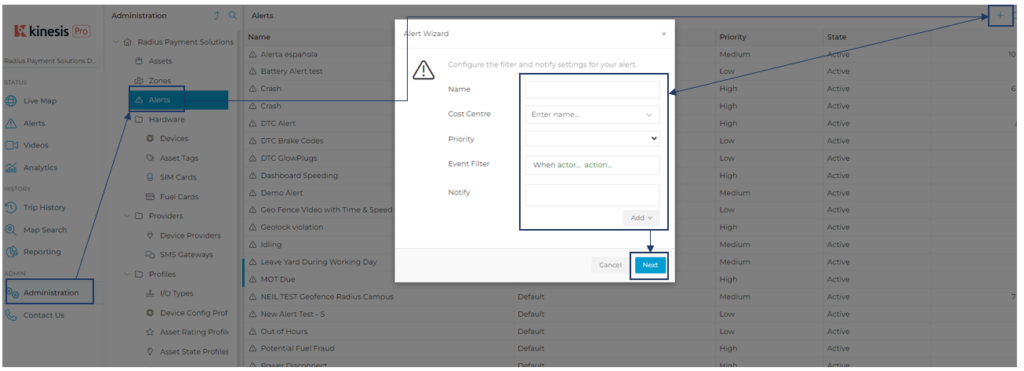
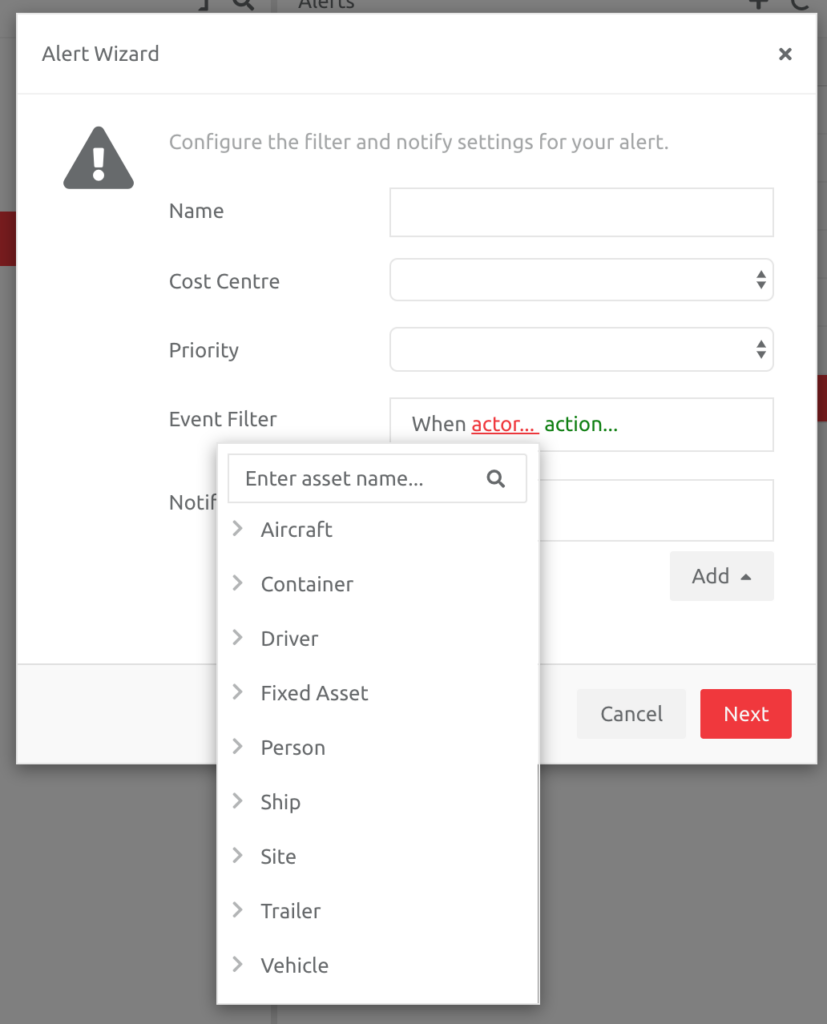
The actor corresponds to which Asset will trigger the Alert (WHO). Specific Assets can be added by typing in their name or groups chosen under the Asset types.
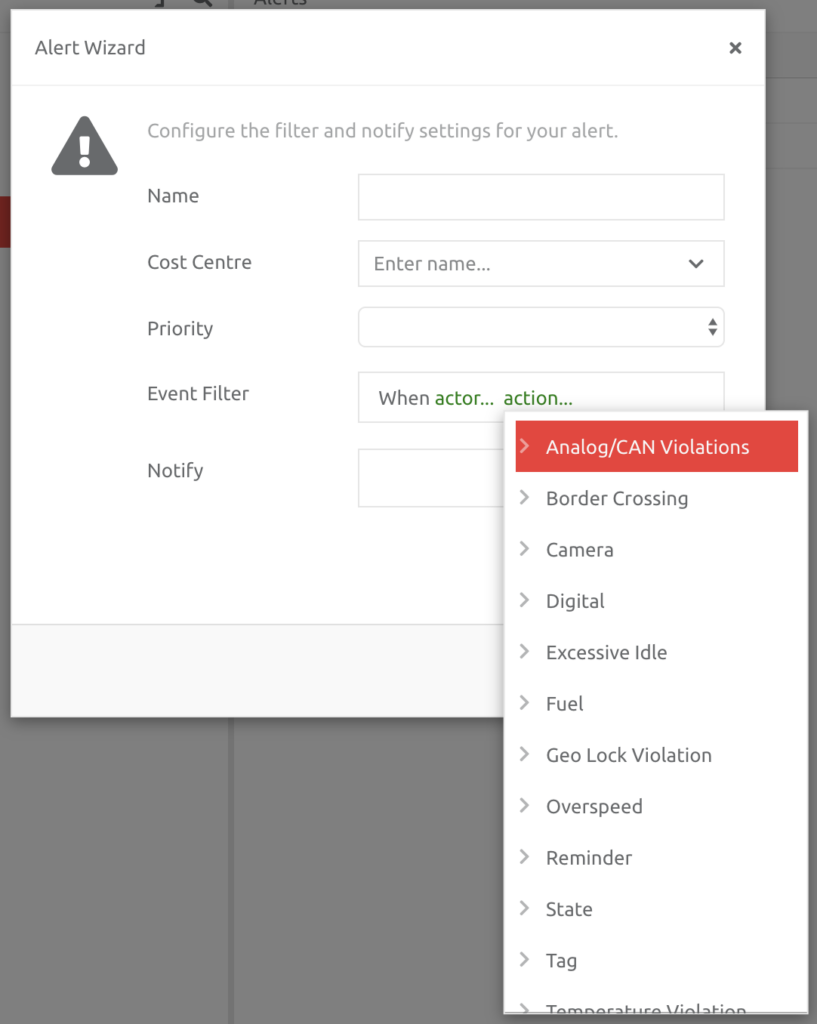
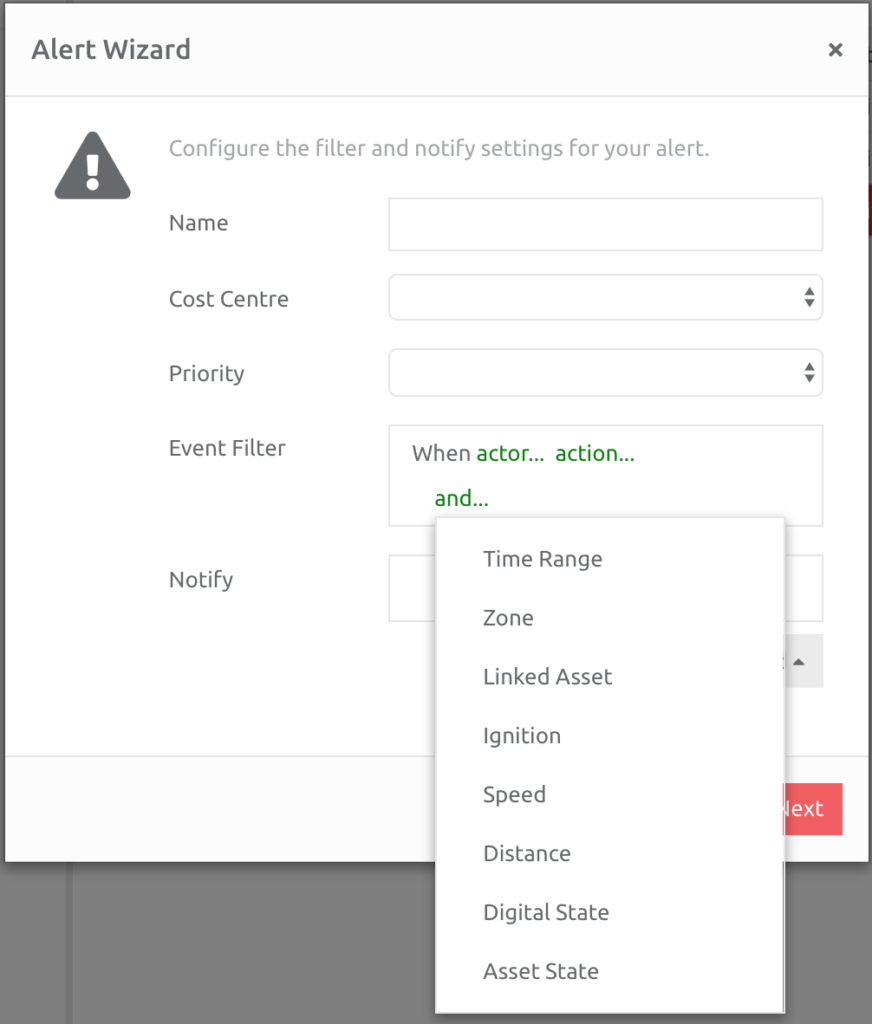
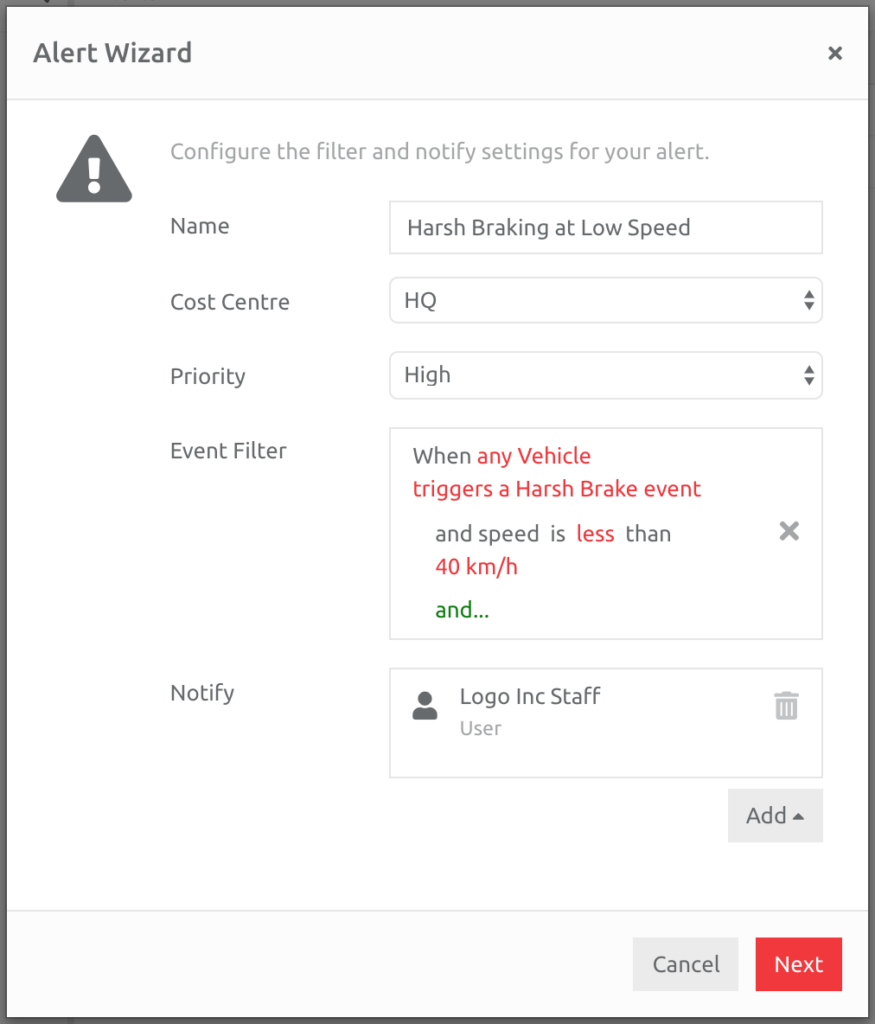
2.2 Editing and Deleting an Alert
Alerts can be edited and deleted from the Alerts page.
1. Choose the Alert to be Edited/Deleted,
2. Click the 3 buttons (Settings) icon, and choose Edit or Delete as required.
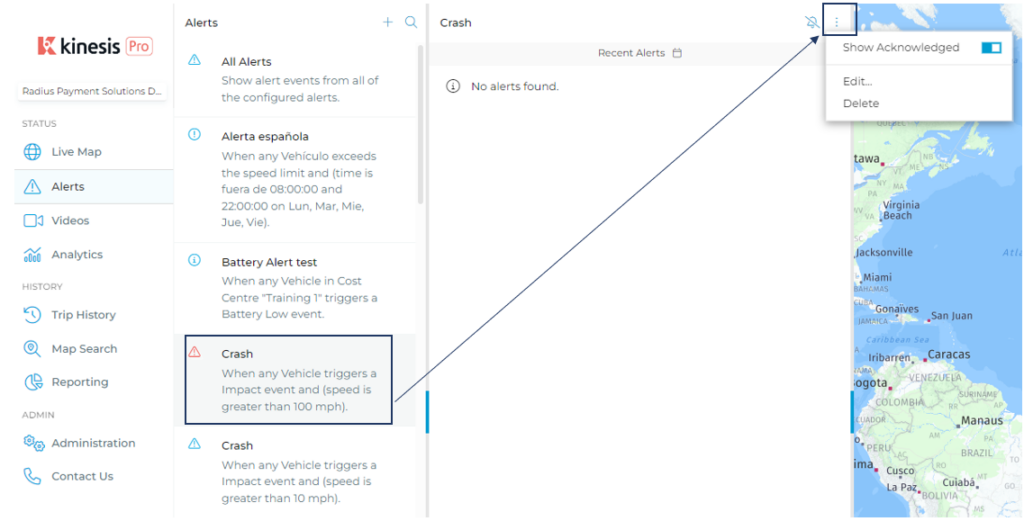
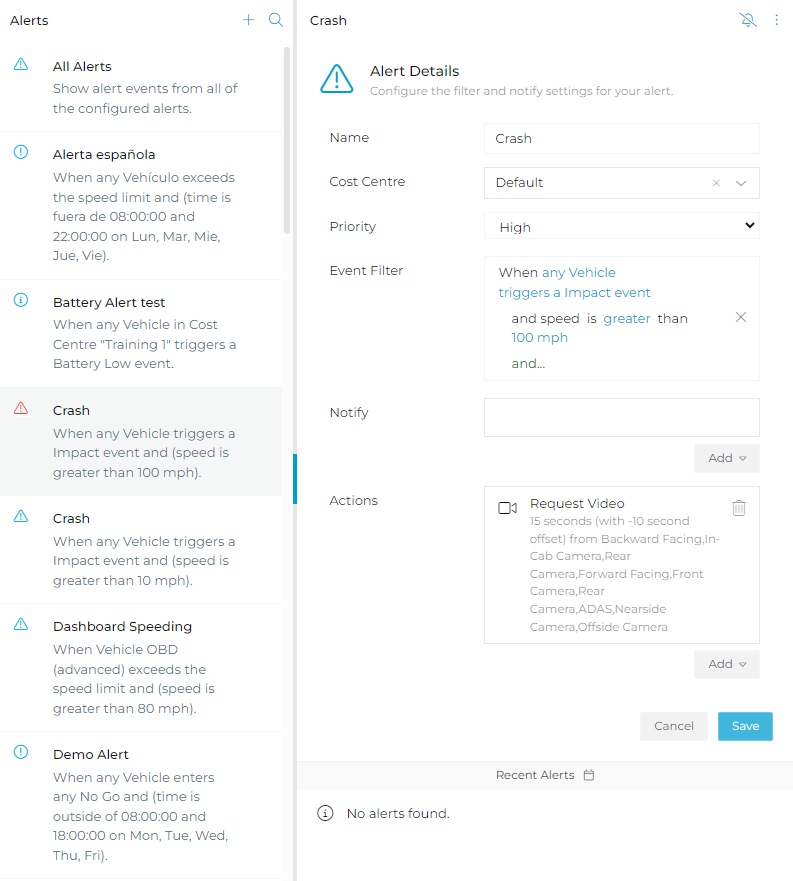
3. Viewing Alerts
1. Navigate to Alerts under Status. The default screen will appear (Alerts list and map at GMT):
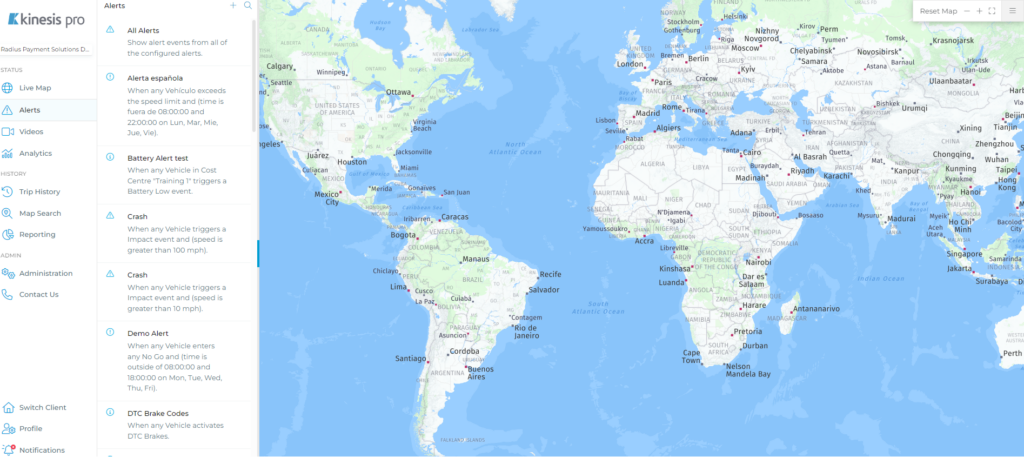
2. Choose All Alerts or a specific Alert to open the recently triggered ones on the map:
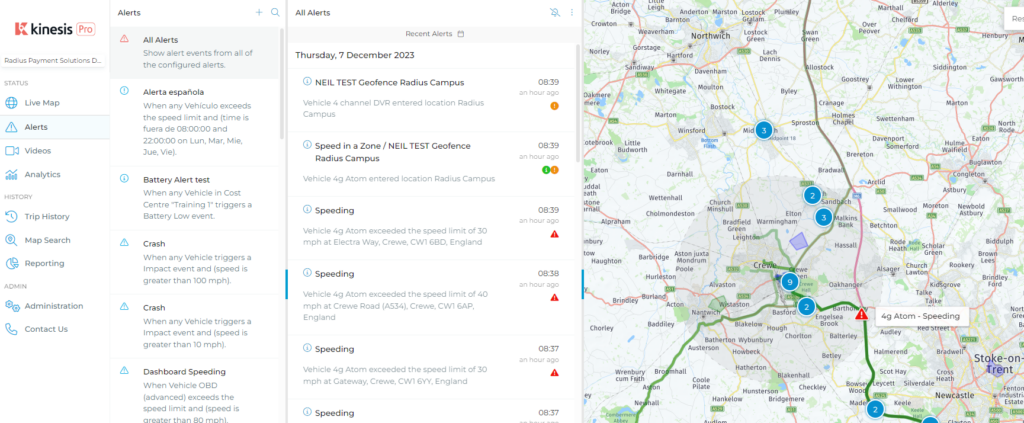
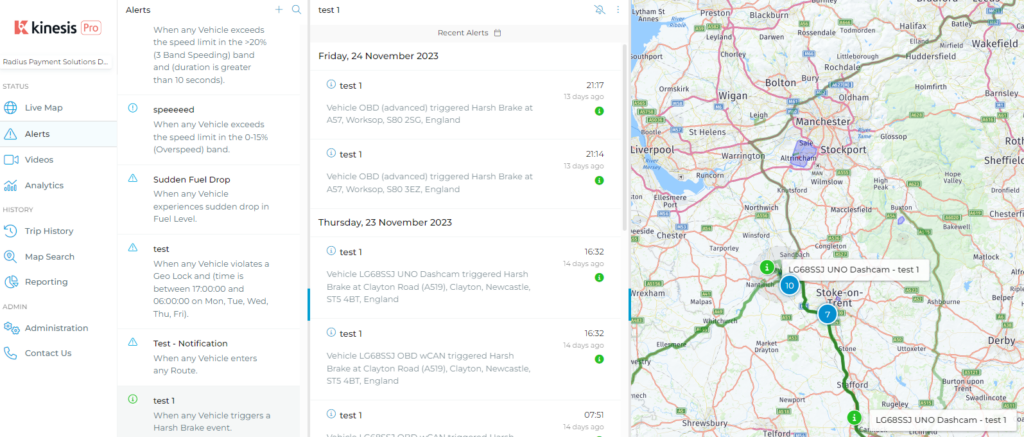
3: Users can also see what alerts make up the group on the map by hovering their mouse over a group:
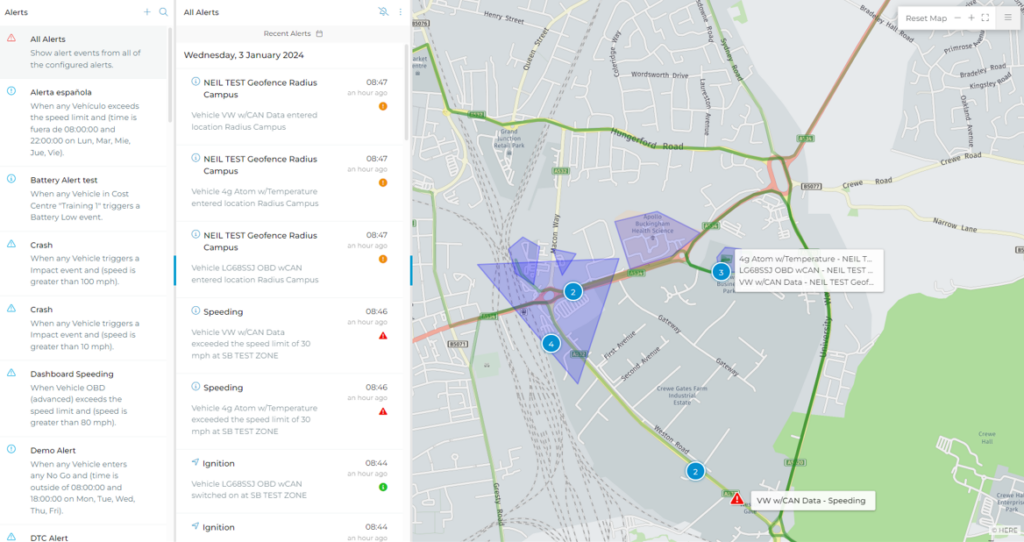
4: Clicking on the group will open the individual Alerts on the map:
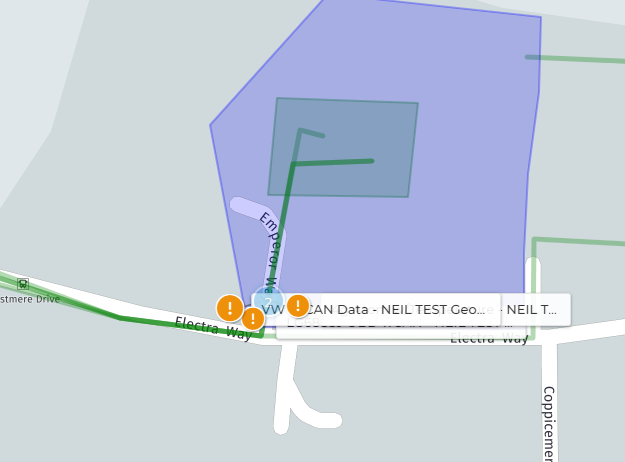
Filtering Alerts by Dates
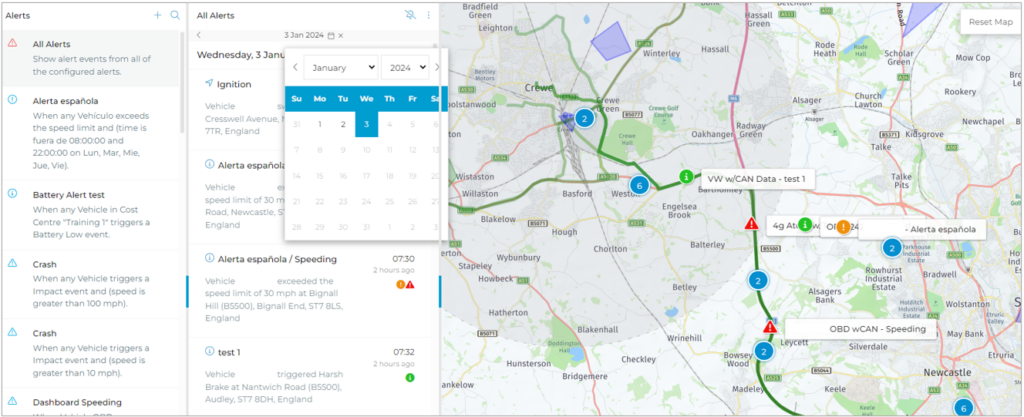
4. Management of alerts
4.1 Showing/Hiding Acknowledged Alerts
Introduction
Alerts are can be acknowledged and commented on. To make the view easier for Users, Acknowledged Alerts can be hidden from view. By Default they are visible.
To hide acknowledged alerts, choose the alert view required (All or a specific Alert), then choose the option button and switch off Show Acknowledged:
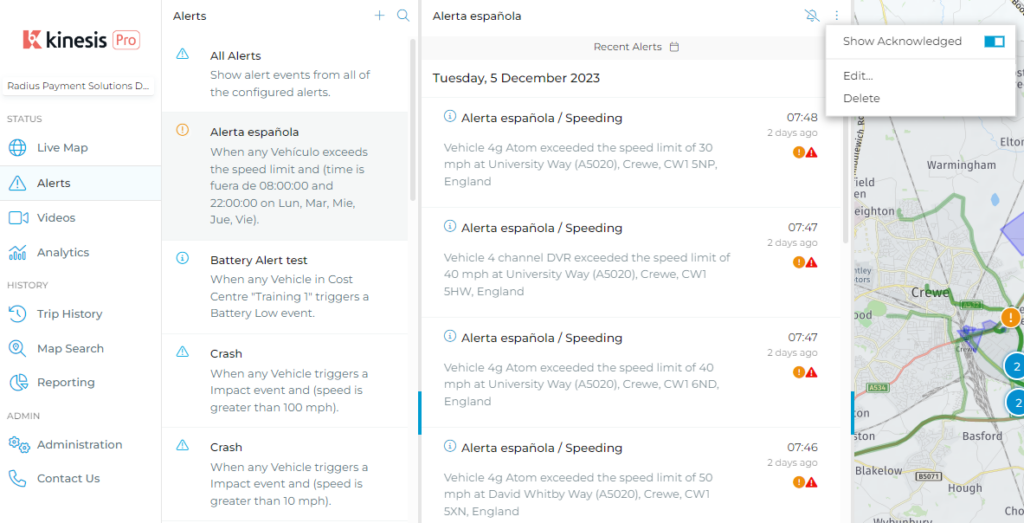
4.2 Acknowledging/Commenting on Alerts
Introduction
Users can acknowledge and comment on Alerts. This can be used to manage Alerts in a control room environment and ensure nothing of importance is missed. This can be Reported on, as explained further in this article.
Acknowledging/Commenting on Alerts
Once a User chooses an Alert, the specific position of the Alert appears on the map, and an option where Users can acknowledge or comment on the Alert.
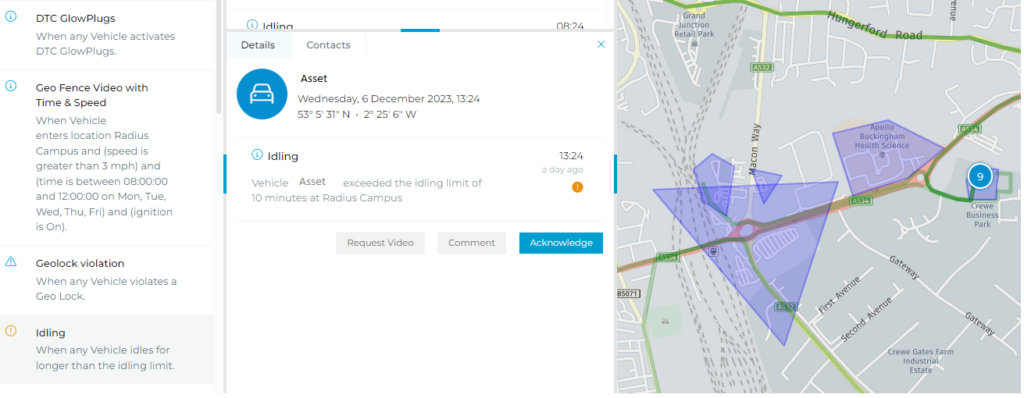
The User chooses whether to acknowledge or comment on the Alert, and enters text in the pop-up box:
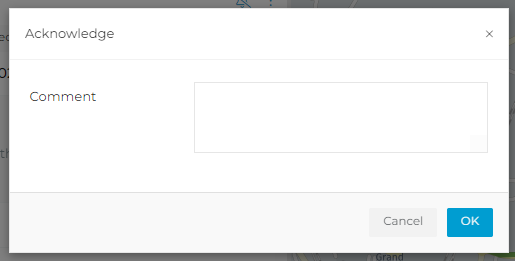
Once they have added this text, the Alert will display this information on the specific Alert, and in the list of Alerts:
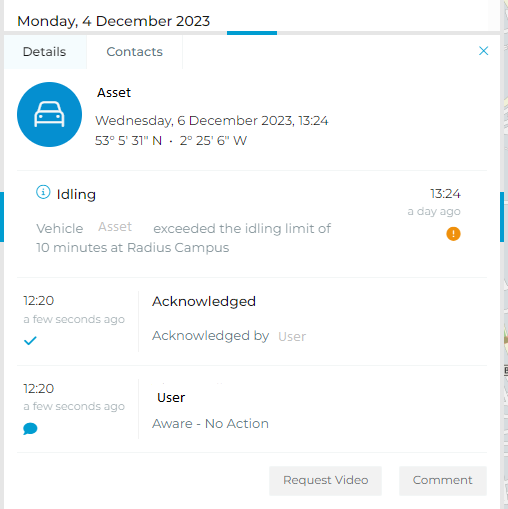
Reporting on Alerts
Alerts can be reported in two ways: by Events or as a List of Alerts. Information that is included in the Report is whether the Alert was acknowledged or commented on and by whom:
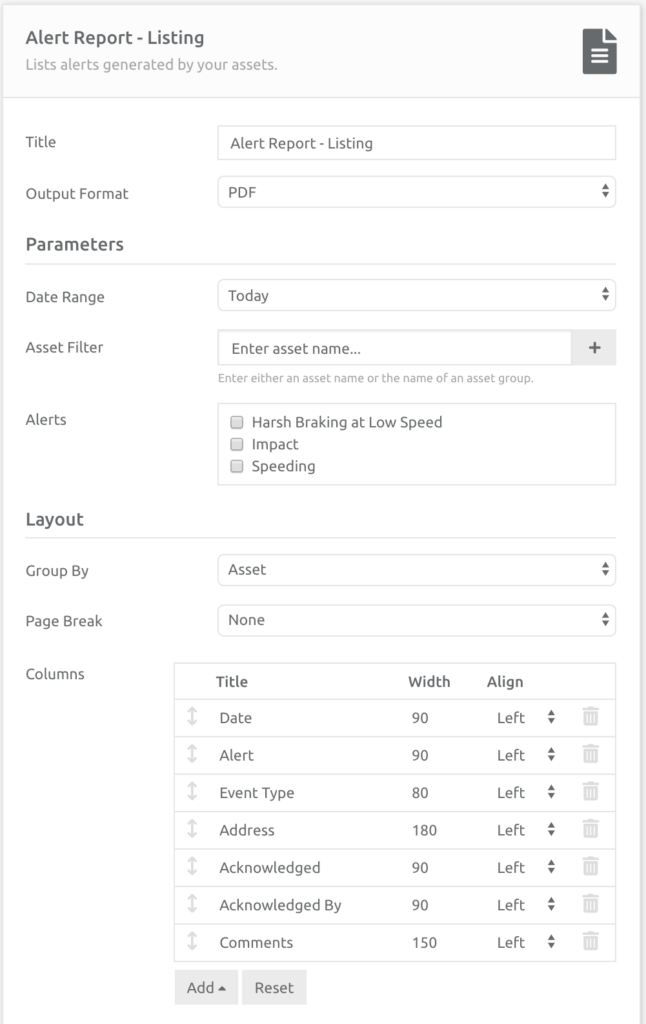
Keep learning
Need help?
Use our help me choose wizard or contact us on one of the options below.
 United Kingdom - English
United Kingdom - English United States - English
United States - English Ireland - English
Ireland - English Netherlands - Dutch
Netherlands - Dutch France - French
France - French Germany - German
Germany - German Italy - Italian
Italy - Italian Spain - Spanish
Spain - Spanish Belgium - Dutch
Belgium - Dutch Portugal - Portuguese
Portugal - Portuguese Singapore - English
Singapore - English Malaysia - English
Malaysia - English Australia - English
Australia - English New Zealand - English
New Zealand - English